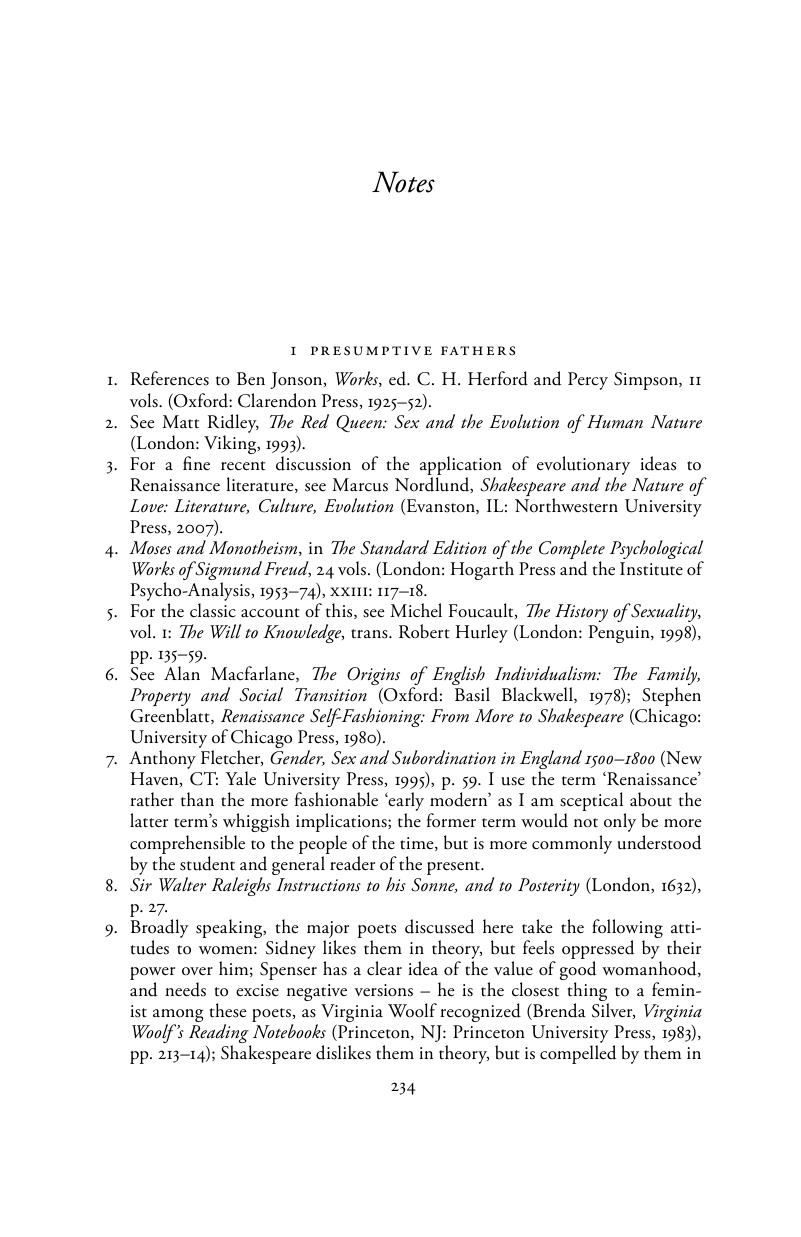Book contents
- Frontmatter
- Contents
- Acknowledgements
- List of abbreviations
- 1 Presumptive fathers
- 2 Uncertain paternity: the indifferent ideology of patriarchy
- 3 The childish love of Philip Sidney and Fulke Greville
- 4 Spenser's timely fruit: generation in The Faerie Queene
- 5 ‘We desire increase’: Shakespear's non-dramatic poetry
- 6 John Donne's rhetorical contraception
- 7 ‘To propagate their names’: Ben Jonson as poetic godfather
- Coda: Sons
- Notes
- Bibliography
- Index
- References
Notes
Published online by Cambridge University Press: 04 August 2010
- Frontmatter
- Contents
- Acknowledgements
- List of abbreviations
- 1 Presumptive fathers
- 2 Uncertain paternity: the indifferent ideology of patriarchy
- 3 The childish love of Philip Sidney and Fulke Greville
- 4 Spenser's timely fruit: generation in The Faerie Queene
- 5 ‘We desire increase’: Shakespear's non-dramatic poetry
- 6 John Donne's rhetorical contraception
- 7 ‘To propagate their names’: Ben Jonson as poetic godfather
- Coda: Sons
- Notes
- Bibliography
- Index
- References
Summary

- Type
- Chapter
- Information
- Poetry and Paternity in Renaissance EnglandSidney, Spenser, Shakespeare, Donne and Jonson, pp. 234 - 257Publisher: Cambridge University PressPrint publication year: 2010



